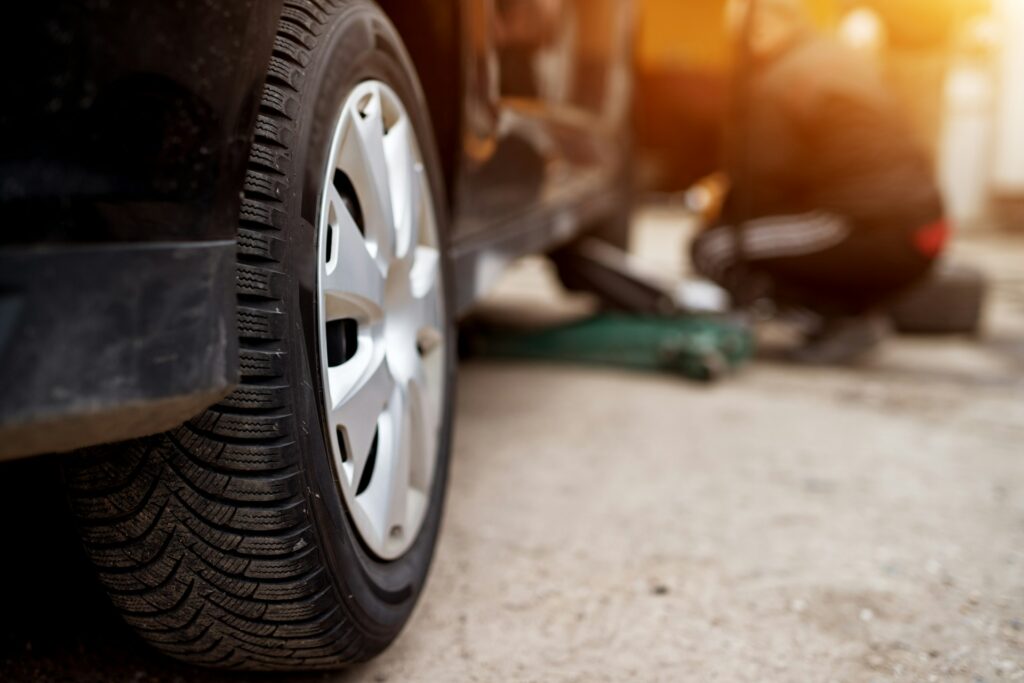Your vehicle’s wheel alignment is one of those essential maintenance aspects that often goes unnoticed until problems become apparent. Proper alignment ensures your tyres meet the road at the correct angle, your wheels point straight, and your steering wheel is centred when driving.
When these angles fall out of specification, it can lead to uneven tyre wear, poor handling, and increased fuel consumption. Understanding the warning signs of misalignment can save you money on premature tyre replacement and keep your vehicle performing safely.
The Steering Wheel Test
One of the most obvious indicators of alignment issues is the behaviour of your steering wheel. When driving on a straight, flat road, your steering wheel should sit perfectly centred with minimal input from you. If you notice the wheel is tilted to one side whilst the car travels straight, or if you’re constantly making small corrections to maintain a straight line, your alignment is likely off.
This misalignment occurs when the angles of your wheels don’t match the manufacturer’s specifications, causing the vehicle to naturally pull to one side. Interestingly, it can even affect air quality negatively.
Pay attention to how the steering wheel feels in your hands. A properly aligned vehicle should track straight with light, responsive steering. If the wheel feels loose or if there’s excessive play before the car responds to your input, alignment problems could be contributing to the issue, though this might also indicate worn steering components that require inspection.

Vehicle Pulling Or Drifting
Perhaps the most common symptom of poor alignment is when your car pulls or drifts to one side whilst driving. Test this on a quiet, level road by briefly loosening your grip on the steering wheel. A properly aligned vehicle should continue travelling straight ahead. If the car immediately veers left or right, your alignment needs attention.
It’s worth noting that slight pulling can sometimes be caused by road camber (the intentional slope built into roads for drainage). However, if your vehicle consistently pulls in the same direction regardless of which side of the road you’re on, alignment is the likely culprit. This pulling forces you to constantly correct the steering, which can be tiring on long journeys and potentially dangerous in emergency situations.
Uneven Or Rapid Tyre Wear
Your tyres provide valuable clues about your vehicle’s alignment status. Inspect all four tyres regularly for unusual wear patterns. With correct alignment, your tyres should wear evenly across the entire tread surface. Misalignment typically causes specific wear patterns that can help diagnose the problem.
If the inside or outside edge of your tyres is significantly more worn than the centre, this suggests a camber issue (the angle at which your tyres sit relative to the road surface).
Feathering, where the tread appears smooth on one side but sharp on the other, often indicates a toe problem, referring to whether your tyres point inward or outward when viewed from above. Cupping or scalloping (dipped areas around the tyre’s edge) can result from a combination of alignment issues and suspension problems.
Regular tyre inspections not only help you catch alignment problems early but also maximise the life of your tyres, which represents significant savings over time. New tyres are expensive, and misalignment can reduce their lifespan by thousands of miles.

When To Seek Professional Assessment
Whilst these indicators can alert you to potential problems, proper wheel alignment requires specialised equipment and expertise. Modern vehicles use precise angles measured in degrees and minutes, which can’t be accurately assessed by eye or feel alone. Book professional wheel alignment at Dexel Tyre & Auto Centre for smoother drives, where computerised equipment can measure your vehicle’s alignment angles and make necessary adjustments to manufacturer specifications.
Several situations warrant having your alignment checked even if you haven’t noticed obvious symptoms. After hitting a substantial pothole or kerb, an alignment check is advisable, as the impact can knock your wheels out of specification. Similarly, if you’ve been involved in any collision, even a minor one, the forces involved can affect alignment. When replacing suspension components or getting new tyres fitted, it’s wise to have the alignment checked to ensure optimal performance and longevity of the new parts.
The Vibration Factor
Whilst vibrations can stem from various sources (including unbalanced wheels, worn suspension components, or brake issues), misalignment can contribute to steering wheel vibration, particularly at higher speeds. If you notice your steering wheel shaking or vibrating whilst driving, especially in conjunction with other alignment symptoms, it’s worth having the alignment checked alongside a general inspection of your steering and suspension systems.

The Financial Impact Of Neglecting Alignment
Ignoring alignment problems might seem like a way to save money in the short term, but it proves costly over time. Misaligned wheels create uneven tyre wear, potentially requiring replacement thousands of miles earlier than properly maintained tyres. Poor alignment also increases rolling resistance, which means your engine works harder and burns more fuel to maintain speed. Proper alignment can improve fuel efficiency by as much as 10%, which adds up to substantial savings over a year of driving.
Beyond tyres and fuel, misalignment places additional stress on suspension components, potentially accelerating wear on ball joints, bearings, and other parts. The handling and safety implications also shouldn’t be overlooked (a vehicle that pulls or has compromised steering response is more difficult to control in emergency situations).
Prevention & Maintenance
Whilst some alignment issues are unavoidable, particularly if you frequently drive on poorly maintained roads, certain practices can help maintain proper alignment longer. Avoid potholes and road debris when safely possible, approach speed bumps and kerbs carefully, and don’t mount kerbs unless absolutely necessary. Regular suspension inspections can catch worn components before they affect alignment, and maintaining proper tyre pressure reduces stress on suspension systems.
Most manufacturers recommend having your alignment checked annually or every 12,000 to 15,000 miles, though this can vary based on your driving conditions and vehicle type. If you frequently drive on rough roads or your area experiences harsh winters with significant road damage, more frequent checks may be prudent.
The Bottom Line
Your vehicle’s wheel alignment plays a crucial role in handling, safety, tyre longevity, and fuel efficiency. By staying alert to the key indicators (steering wheel position, vehicle pulling, uneven tyre wear, and vibrations), you can address alignment issues before they become costly problems.
Regular inspections and prompt attention to symptoms will keep your vehicle driving smoothly and safely whilst protecting your investment in tyres and mechanical components. Don’t wait until your tyres are ruined or your fuel bills have noticeably increased; make wheel alignment checks a regular part of your vehicle maintenance routine.





